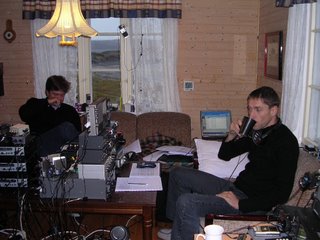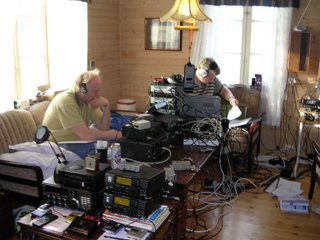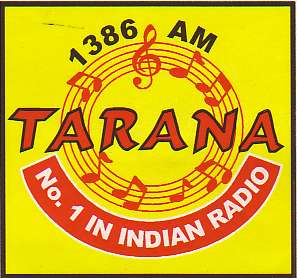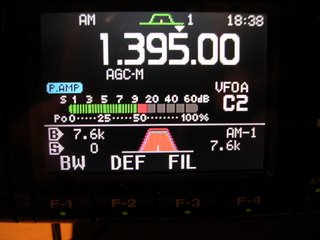First: Some QSLs arrived in my inbox:
WSAU Wausau WI 550, email
CHVO Spaniard's Bay NL 560, email
KDHL Faribault MN 920, email
The E1's display is very large and has room for all the information you need, including a large frequency readout. The illumination has three positions; off, dim and bright, and the contrast can be adjusted. Unfortunately, the "bright" position is nowhere as bright as I would want it, accustumed as I am with the IC-746Pro's exceptional display. May be difficult to read in dim light, or if the lightsource is behind the radio.
Tuning is done by way of a tuning knob, up/down buttons, and direct input via keypad. The tuning knob could use a dimple to make quick tuning easier. Otherwise, one can choose to tune in 10, 100 or 1000 Hz increments. The up/down buttons are used for tuning in pre-selected tuning steps; 5 kHz on Shortwave and Longwave, and selectable 9/10 kHz on Mediumwave. The functions are easy to learn and easy to use. According to the specifications, frequency stability is +/- 10 ppm in the 0-50C temperature range. Not impressing. Actually it is advisable to let it warm up for an hour before doing much ECSS DX.
Modes and bandwidth are chosen from a row with "soft buttons". One button defines the bandwidths as you cycle through the alternatives. One button defines AM/AM-sync, and one SSB button defines USB or LSB. If AM-S is selected, the SSB button defines USB, LSB or DSB (double sideband). There is no choice for modes like CW and RTTY. The button for PBT turns it on and off, and a separate control under the tuning knob adjusts the offset. The offset is displayed above the soft button. These functions are rather intuitive and easy to use.
Audio: Volume, Treble, Bass and Squelch controls are placed on the left side. The Treble and Bass controls do not have a very wide span, although they appear to be adequate for adjusting the audio blend to one's personel preference. I was not impressed though.
Time, Memory: The E1 has rather advanced clock and timer functions which I will not delve further into now. One clock is displayed, unfortunately only hh:mm, not seconds. The E1 also has ample space for memory channels; 500 free to use and 1200 restricted to 120 countries. The memory channels are easy to store, edit and delete. They store frequency, mode, bandwidth, AGC setting, PBT setting and Sync detector setting.
External Antenna input is placed on the left side, with separate sliders for AM and FM to choose between internal and external antennas. The E1 does not have an inboard ferrite antenna, which has caused outcry among some users. Instead the whip is supposed to be used for MW reception as well as SW reception. Many have also commented the lack of a carrying handle. No problem for me, and the rubberised surface which I have criticised earlier actually makes it very safe to hold.
The 77-page manual is for the most part well made. It also contains a quite detailed specification list, and a block diagram. The appendix has an entry-level introduction to SW listening which could have been better, and obviously not made with the E1 in mind so maybe they borrowed the text from somewhere else.
Conclusion: The Eton E1 is a portable with the ambition to perform equal to a high quality desktop. With a few exceptions it really does act like a desktop but while getting there it has lost some of the characteristics of a portable. Nevertheless, the Eton E1 is an excellent receiver of its own right and will perform admirably in most challenging DX situations. And the price simply cannot be beat.

















